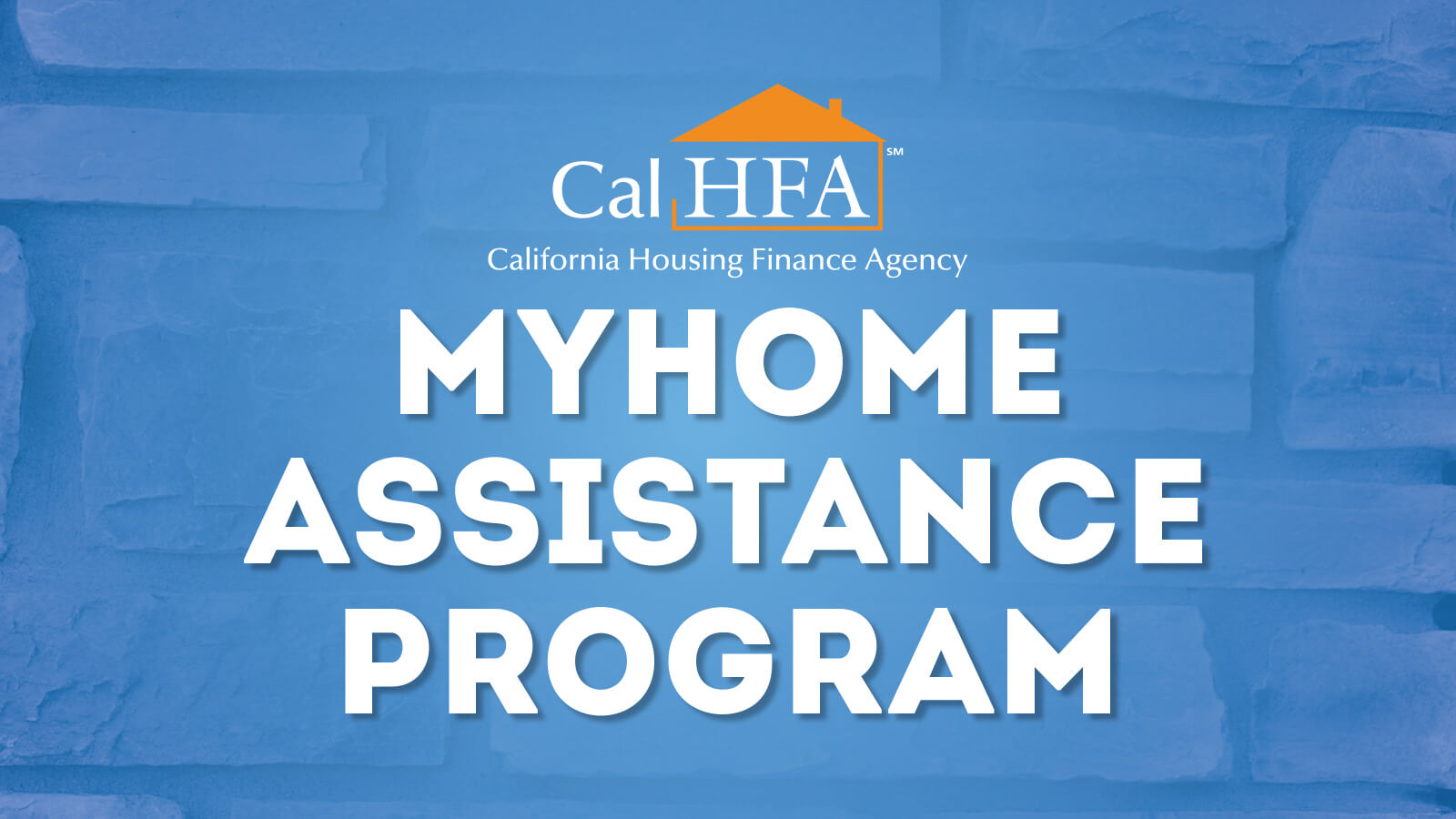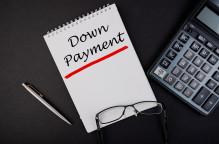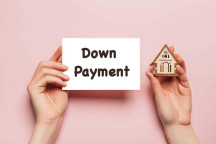Down Payment Assistance Programs & Grants By State 2024
There are lots of available Down Payment Assistance Programs & Grants By State 2024 offered by state or local governments, nonprofit organizations, & private lenders
Down payment assistance (DPA) programs are provided in the form of loans or grants to assist homebuyers in covering a portion of the down payment required for purchasing a home. Currently, there are thousands of available DPA programs nationwide offered by state and local governments, nonprofit organizations, and private lenders. In this article, we are about to share with you some of the biggest down payment assistance programs & grants by state 2024.
How DPA works
Simply put, down payment assistance helps reduce the amount homebuyers need to save for an upfront mortgage payment. Multiple DPAs can also be used for closing costs.
In fact, most DPA programs are provided by nonprofits or state or local housing agencies, with eligibility requirements varying from program to program. Lots of DPAs are geared towards low- to moderate-income borrowers and first-time homebuyers (those who have not owned a home in the previous 03 years) to encourage homeownership and make mortgages more accessible and affordable.

Types of Down Payment Assistance Programs
Down payment assistance often comes in four major types:
- Grants: DPA grants go toward eligible borrowers’ down payments, and the recipient isn’t obligated to repay them.
- Forgivable second mortgage: They are no-interest home loans commonly used for the down payment. Each program has its own set of rules and requirements. However, in general, borrowers are not required to repay a forgivable loan as long as they own their home for a specified number of years. If they sell, transfer, or refinance the property before that period, they’ll likely have to repay the loan.
- Deferred loans: They are another type of interest-free second mortgage used toward a down payment. Generally, borrowers are not required to pay this loan until they move, sell, or refinance the property, or until they have finished paying off the first mortgage.
- Low-interest second mortgages: These are home loans that homebuyers can use to put toward a down payment. Borrowers need to make monthly payments; however, the advantage is that these loans have low interest rates. So, please remember that if you opt for a second loan with low interest for your home down payment, you'll be responsible for making 02 mortgage payments each month.
Down Payment Assistance Programs & Grants by State 2024
The following is a list of some of the most significant DPA programs in 12 states, including Arizona, California, Colorado, Florida, Indiana, Illinois, Michigan, Missouri, North Carolina, North Dakota, Ohio, and Texas.
Note: Although, at the time of posting, we have made reasonable efforts to ensure the accuracy of the information provided below, please note that it is subject to change without prior notice. We recommend checking the program websites for the most up-to-date information.
Arizona Down Payment Assistance
Homebuyers in Arizona can receive assistance with down payments through the Home Plus and Pathway to Purchase DPA programs.
Home Plus
Offered by the Arizona Industrial Development Authority, the Home Plus program provides qualified homebuyers with DPA in the form of a 3-year deferred no-interest second mortgage. That means no interest and monthly payments are required if borrowers do not refinance or sell the property during the initial 36 months of homeownership. The program is available in every city, county, and zip code in the state of Arizona.
Eligibility requirements:
- A minimum credit score of 640 is required to qualify for the program.
- Borrowers’ annual income does not exceed $126,351.
- Completing an education course for homebuyers before the closing.
For more details related to the program, visit the Home Plus homepage.
Pathway To Purchase DPA
The Arizona Department of Housing's Pathway to Purchase program offers a grant of as much as 10% of the loan amount, with a cap of up to $20,000, to assist with closing costs and a down payment. Only residents of one of the 12 designated cities in Arizona are eligible for this program.
Eligibility requirements:
- A minimum credit score of 640 is required.
- The property’s purchase price is not higher than $371,936.
- Borrowers have to use the home as their primary residence.
- Completing an education course for homebuyers
- Other requirements also apply.
Visit the program’s website to get the full details.
California Down Payment Assistance
The CalHFA MyHome Assistance Program is one of several DPA programs offered by the California Housing Finance Agency (CalHFA). Through this program, eligible homebuyers in California are provided with a deferred-payment second mortgage, which can cover up to 3.5% of the home purchase price or appraised value to go towards a down payment and/or closing costs (with a maximum amount of $11,000). This DPA program needs to be used in conjunction with the CalHFA 30-year, fixed-rate mortgage.
Eligibility requirements:
- Being a first-time homebuyer.
- Completing a homebuyer education course.
- The home must be used as the primary residence.
- The homebuyer’s income doesn’t exceed MyHome's income limits.
- The home purchase price must fall within the county's established sales price limits.
As this is a DPA program for first-time homebuyers, it’s unavailable for those already owning an existing home. Still, it’s worth noting that, according to CalHFA, a first-time homebuyer is someone who hasn’t owned or lived in their own house in the last 03 years. This means individuals who have previously owned homes may still qualify for the CalHFA MyHome Assistance Program.
You can find more information about this program at the MyHome Assistance Program webpage.

Colorado Down Payment Assistance
The Colorado Housing Assistance Corporation (CHFA) and the Colorado Housing and Finance Authority (CHAC) offer qualified homebuyers in Colorado great DPA grants and second mortgages.
CHFA Down Payment Assistance
CHFA provides a couple of DPA options for first-time homebuyers via grants and second-mortgage loans.
With the CHFA down payment assistance grant, eligible borrowers can receive as much as 3% of their first mortgage, with a maximum loan amount of $25,000. This assistance is provided as a grant, meaning there aren't any obligations to repay the funds. With a CHFA second mortgage loan, qualified borrowers can apply for a no-interest second mortgage, which can be as much as 4% of the amount of the first mortgage (the loan amount is capped at $25,000). This second mortgage doesn't require monthly payments and accrue interest. However, the entire amount must be repaid when borrowers pay off their first mortgage, sell or refinance the house, or it is no longer their primary residence.
Note that this assistance is required to be used along with the CHFA FirstStep home loan—a 30-year, fixed-rate FHA mortgage.
Eligibility requirements:
- Borrowers need to have a minimum credit score of at least 620.
- Borrowers’ total income doesn’t surpass the income limits set by the CHFA.
- Borrowers have to complete a CHFA-approved homebuyer education class, either online or in person, before loan closing.
- Borrowers are required to put a minimum of $1,000 towards the home purchase.
For more information, visit the CHFA website.
CHAC Down Payment Assistance
CHAC is a non-profit organization that provides DPA and affordable loan programs to homebuyers with low to moderate incomes in Colorado. CHAC’s DPA offers as much as $7,500 in down payment assistance. It’s intended for first-time homebuyers who haven’t owned a house in the last 03 years.
Eligibility requirements:
- Homebuyers need to contribute at least $1,000 toward the home purchase. For those who are in the disability program, the minimum contribution is $750. Note that gift funds aren’t accepted to fulfill this requirement.
- The home has to be the primary residence.
- Borrowers are also required to complete a homebuyer education course.
For more details, visit the CHAC website.
Florida Down Payment Assistance
Depending on the county of residence, Florida homebuyers may have several options for assistance with a down payment on a house. Here are three DPA programs provided by Florida Housing to eligible homebuyers:
The Florida Assist (FL Assist)
This program offers a deferred second mortgage with a zero percent interest rate of up to $10,000. Qualified borrowers can use this amount for closing costs, a down payment, or both. Repayment is deferred, and borrowers are not required to make monthly payments on the loan. However, the repayment is due when they sell the house, refinance or fully pay off the first mortgage, or cease to live there.
3%, 4%, and 5% HFA Preferred and HFA Advantage PLUS Second Mortgage
The 3%, 4%, and 5% HFA Preferred program offers help to eligible borrowers in the form of a forgivable second mortgage. By applying for this program, they can receive 3%, 4%, or 5% of the entire loan amount. Borrowers’ income and the house location determine how much of the loan they are eligible for. It’s worth noting that this second mortgage loan is forgiven at 20% annually over the entire 5-year term when used alongside Florida Housing’s conventional HFA Advantage for TBA or HFA Preferred for TBA first mortgage products.
The Florida Homeownership Loan Program (FL HLP) Second Mortgage
This program is designed to provide qualified first-time homebuyers with as much as $10,000 to use towards their closing costs and down payment. This assistance comes via a 15-year second mortgage loan with a 3% interest rate. Monthly payments are required from borrowers. The outstanding unpaid principal balance is deferred unless the property is sold or refinanced, the first mortgage is paid off, or the mortgagor(s) ceases to live there as their primary residence.
For further details about these programs, visit the FHFC’s website.
Indiana Down Payment Assistance
Eligible first-time and repeat homebuyers in Indiana can access down payment help through different programs provided by IHCDA, the Indiana Housing and Community Development Authority. Two of them are the First Place and Next Home programs.
The First Place (FP) Program offers qualified borrowers down payment assistance for up to 6% of the home’s purchase price. Meanwhile, the Next Home (NH) Program can provide as much as 3.5% of the purchase price for down payment assistance.
Borrowers need to be first-time homebuyers to apply for these programs. Both require a FICO credit score of at least 640 and a DTI (debt-to-income) ratio of 45% or less. Borrowers with a credit score of 680 or higher and a DTI ratio exceeding 45% can also be eligible if their DTI is 50% or less. In addition, these two programs are required to be used with an FHA or conventional 30-year fixed-rate loan.
Illinois Down Payment Assistance
The Illinois Housing Development Authority (IHDA) provides several DPA loan options for eligible borrowers in Illinois. To qualify for any of these loans, applicants need to put up 1% of the home purchase price or $1,000 themselves. Note that both existing homes and new builds are eligible.
IHDAccess Forgivable Mortgage
The program, available for both repeat and first-time buyers statewide, provides a forgivable loan that is 4% of the purchase price, with a maximum limit of $6,000 in assistance for closing costs and down payment. Parts of the loan are gradually forgiven, so if borrowers reside in the home for a specified period, typically 10 years, they won’t need to repay the loan.
Eligibility requirements:
- A credit score of 640 or higher is required.
- Stay in the home as the primary residence.
- Meet the purchase price and household income limits.
- Other requirements also apply.
IHDAccess Deferred Mortgage
The IHDAccess Deferred Mortgage program offers 5% of the purchase price, up to $7,500, to help with down payments and closing costs. This assistance is in the form of a no-interest loan deferred for the life of the mortgage, meaning that borrowers don’t have to pay back until the property is refinanced or sold or the mortgage is fully paid off.
Eligibility requirements:
- Both non-first-time and first-time homebuyers are eligible.
- A credit score of 640 or higher is required.
- Meet the purchase price and household income limits.
- Other requirements also apply.
IHDAccess Repayable Mortgage
The IHDAccess Repayable program offers an interest-free loan that can cover up to 10% of the property's sales price (up to a maximum of $10,000) to help eligible borrowers with down payment and closing costs. Not like the Access Deferred and Access Forgivable programs, this loan must be repaid monthly over 10 years; however, it does provide a higher level of assistance.
Eligibility requirements:
- Both non-first-time and first-time homebuyers are eligible.
- A credit score of at least 640.
- Meet the purchase price and household income limits.
- Other requirements also apply.
Learn more about these programs on the IHDA’s website.
Michigan Down Payment Assistance
There’s a DPA program known as the MI 10K DPA Loan offered by the Michigan State Housing Development Authority (MSHDA) that helps prospective homebuyers with their down payment and closing costs. It can provide up to $10,000 in DPA if homebuyers finance their home purchase with MSHDA’s MI Loan. The program is available for statewide first-time buyers (those who haven't owned or bought a property in the previous 03 years) and repeat buyers in particular areas.
Eligibility requirements:
- A credit score of at least 640.
- The maximum sales price of the house is $224,500 statewide.
- Household income limits apply, which vary depending on the location of the property and family size.
- A housing education class is also required.
Discover more at the MSHDA’s website.
Missouri Down Payment Assistance
The Missouri Housing Development Commission (MHDC) has two programs—First Place and Next Step—to provide down payment help for first-time and repeat homebuyers.
First Place Program
The MHDC First Place Program is available statewide, assisting in the form of a second forgivable mortgage. When applying for this program, eligible homebuyers can receive up to 4% of the first mortgage to cover their closing costs and down payments.
The loan amount will begin to be forgiven at the end of year 5 until year 10, occurring monthly at 1/60 of the original value. That means there won’t be any outstanding balance by the end of year 10. However, borrowers may have to repay the amounts if they sell, transfer, or refinance the home within the first 10 years.
Eligibility requirements:
- A credit score of 640 or higher.
- Meet income limits & purchase price limits.
- Use an MHDC mortgage loan.
- Other requirements also apply.
Next Step Program
The MHDC Next Step Program has higher purchase price and income limits than the First Place Program, making it a good option for first-time homebuyers with higher incomes. Qualified applicants can get 4% cash assistance (in the form of a 100% forgiven second loan) to help with closing costs and down payments. After 10 years of residing in the house as a primary residence, the loan amount will be fully forgiven.
Eligibility requirements:
- Meet the gross annual income limits.
- A credit score of at least 640.
- A debt-to-income ratio of 45% or lower.
- Other requirements also apply.
To learn more details about these programs, go to the MHDC’s official website to get more information.
North Carolina Down Payment Assistance
The North Carolina Housing Finance Agency provides generous DPA options for first-time and repeat homebuyers in North Carolina through its NC Home Advantage Mortgage and NC 1st Home Advantage Down Payment programs.
NC Home Advantage Mortgage
With this program, eligible repeat and first-time homebuyers are able to receive as much as 3 percent of the mortgage balance in down payment assistance.
Eligibility requirements:
- Purchase a home in North Carolina.
- The minimum credit score is 640.
- Annual income does not exceed $134,000.
- Have to occupy the home as the principal residence within 60 days of closing.
- Meet the sales price limits.
- Other requirements also apply.
NC 1st Home Advantage Down Payment
Borrowers who are military veterans or first-time buyers and apply for an NC Home Advantage Mortgage may be eligible for up to $15,000 in upfront payment help through this NC 1st Home Advantage Down Payment program.
Eligibility requirements:
- Purchase a home in North Carolina.
- The minimum credit score is 640.
- Meet the sales price and income limits.
- Have to occupy the home as the principal residence within 60 days of closing.
Both options are 0%, deferred second mortgages, and begin to be forgiven 20% each year in the 11th year of the mortgage and entirely forgiven by year 15. However, if the property is sold, transferred, or refinanced before year 15, borrowers must repay all of the amount.
Detailed information about these two DPA programs is available on the official website of the North Carolina Housing Finance Agency.

North Dakota Down Payment Assistance
DCA and Start Programs are two major down payment assistance programs brought by the North Dakota Housing Finance Agency (NDHFA) to help eligible borrowers statewide with their upfront home purchasing closing costs. Both programs provide low- to moderate-income homebuyers with up to 3% of their first mortgage loan amount that can be used for closing costs, a down payment, and prepaid items. It’s worth noting that these two can’t be used in conjunction with other DPA programs.
Eligibility requirements:
- The borrower’s household income cannot be higher than income limits, which vary depending on the county and the size of the family.
- The property must be used as the primary residence.
- Only one- to two-unit properties are eligible.
To find full details about these programs, go to the NDHFA’s website.
Ohio Down Payment Assistance
For homebuyers in the state of Ohio, Your Choice! Down Payment Assistance offered by the Ohio Housing Finance Agency (OHFA) is a great program to consider. Eligible borrowers applying for this program can receive a forgivable loan of either 2.5% or 5% of the purchase price. The funds can go toward closing costs, a down payment, or pre-closing expenses.
This assistance takes the form of a loan forgiven after 7 years unless borrowers sell, transfer, or refinance their property before then. However, the total repayment would be due if the home is sold, transferred, or refinanced within the initial 7 years.
Eligibility requirements:
- A credit score of at least 640 is required for a VA, USDA, or conventional loan. Meanwhile, those with FHA loans have a minimum FICO score of 650.
- Qualified borrowers need to complete a free education course for homebuyers.
- Purchase price limits and income limits apply, which vary depending on the specific county of residence.
For full details regarding this program, please visit OHFA’s official website.
Texas Down Payment Assistance
The My Choice Texas Home and My First Texas Home programs offered by the Texas Department of Housing and Community Affairs (TDHCA) provide significant DPA to help make homeownership in Texas more attainable. Both are available statewide.
My First Texas Home
The program is exclusively for first-time homebuyers and veterans, giving borrowers 2%, 3%, 4%, and 5% of the loan amount in closing costs and upfront payment assistance. This assistance must be paid off as a zero-percent-interest deferred loan if or when the borrower sells, refinances, or pays off the mortgage. Eligible borrowers can use this DPA program in conjunction with USDA, FHA, and VA loan options, all of which provide a 30-year fixed-rate mortgage with an interest rate below the market rate.
Eligibility requirements:
- A minimum credit score of 620.
- Meet property value limits and income limits.
- Other requirements also apply.
My Choice Texas Home
This program also offers as much as 5% of the first Lien Mortgage amount to cover the down payment and closing costs. However, unlike My First Texas Home, you do need to be a first-time homebuyer to apply for the My Choice Texas Home program. Borrowers can use this DPA with government-backed loans and conventional loans.
Eligibility requirements:
- A minimum credit score of 620.
- Meet property value limits and income limits.
- Borrowers do not need to be first-time homebuyers.
- Other requirements also apply.
For further details about these programs, go to the TDHCA website.
How To Find Down Payment Assistance?
DPA programs are typically very localized, with just a few nationwide DPAs and many statewide ones, but a large part are run at the county or city level. One of the easiest ways to find DPA programs you might qualify for is to consult with your loan officer or broker. They are often well-informed about local grants and loan assistance options that could benefit you. Additionally, they will know which programs your lender can accept, as not all lenders work with every DPA program.
Also, if you’d like to do your own research on the internet, search online for keywords such as “down payment assistance grants” in your area (including your state, county, and city). This approach can lead you to up-to-date programs available in your locality that you may qualify for, so you can be ready to discuss them with your mortgage lender or broker.
FAQs about Down Payment Assistance Programs & Grants by State 2024
How do I apply for a DPA program?
Eligible borrowers can apply for down payment help through their local or state housing finance agency. Also, down payment assistance can be sought through private non-profit organizations or by working directly with approved lenders.
Are there any drawbacks when using down payment assistance?
Yes. While down payment assistance opens doors to homeownership, it may not be without potential drawbacks. For example, borrowers can potentially face a higher interest rate, additional fees, or restrictions on the sale of their property (as some programs require them to live in the house for a certain period before selling to avoid repayment of the DPA). So, it’s always crucial to review the terms of any DPA program to understand clearly all financial obligations and restrictions.
How much down payment assistance can I get?
There is usually a cap on the amount of down payment assistance available, which can be offered as a set percentage of the home's purchase price or as a specific dollar amount. Of course, the set percentage and dollar amount vary depending on the particular programs you apply for. For example, Colorado first-time homebuyers can receive a DPA grant of up to 4% of the first mortgage, with a maximum loan of $25,000. Meanwhile, Ohio first-time homebuyers can get a forgivable loan of 2.5% or 5% of the purchase price to put toward their upfront payment and closing costs.
Bottom line
Securing a down payment tends to be one of the biggest hurdles for prospective first-time homebuyers and those with limited savings. However, down payment assistance programs & grants by state 2024 offer valuable help to reduce the initial financial barrier, empowering individuals to pursue their homeownership dreams. Whether through state or local housing agencies, nonprofit organizations, or approved lenders, these opportunities can significantly enhance your ability to secure a home. Remember, these programs often have eligibility requirements, so explore them early in your house hunt.


